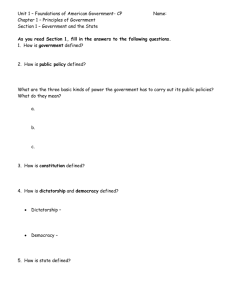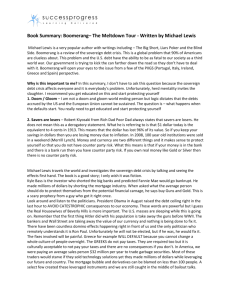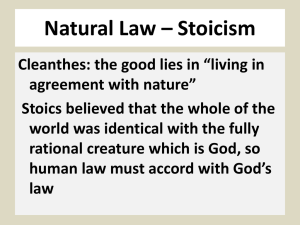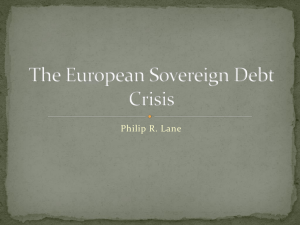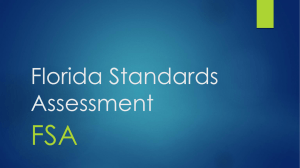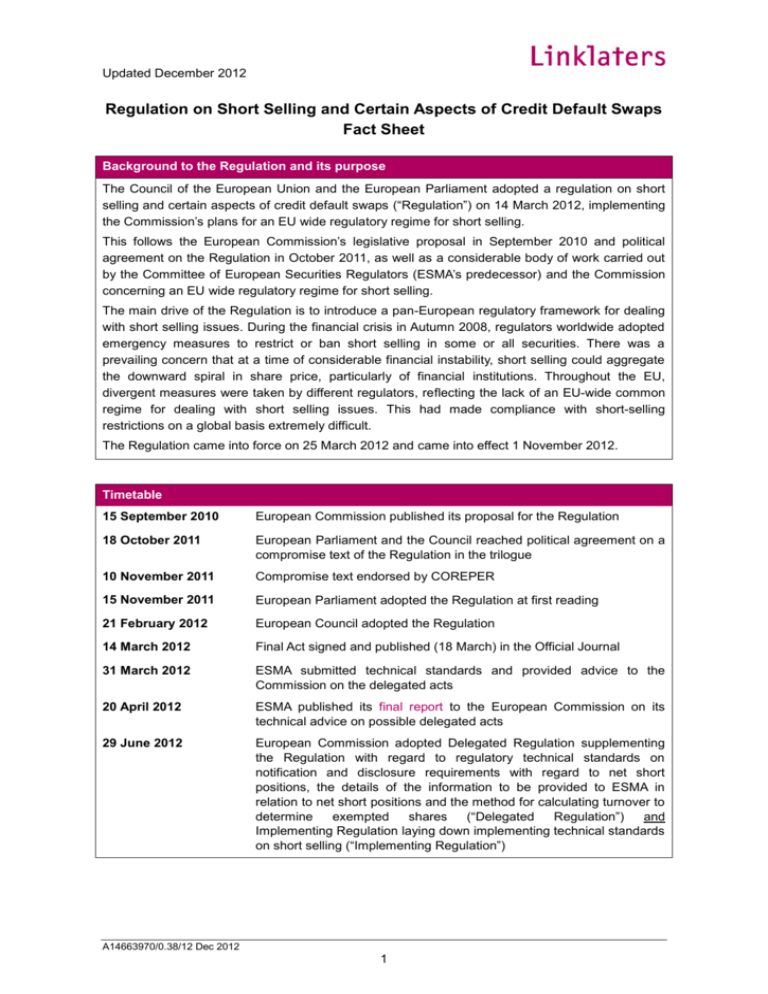
Updated December 2012
Regulation on Short Selling and Certain Aspects of Credit Default Swaps
Fact Sheet
Background to the Regulation and its purpose
The Council of the European Union and the European Parliament adopted a regulation on short
selling and certain aspects of credit default swaps (“Regulation”) on 14 March 2012, implementing
the Commission’s plans for an EU wide regulatory regime for short selling.
This follows the European Commission’s legislative proposal in September 2010 and political
agreement on the Regulation in October 2011, as well as a considerable body of work carried out
by the Committee of European Securities Regulators (ESMA’s predecessor) and the Commission
concerning an EU wide regulatory regime for short selling.
The main drive of the Regulation is to introduce a pan-European regulatory framework for dealing
with short selling issues. During the financial crisis in Autumn 2008, regulators worldwide adopted
emergency measures to restrict or ban short selling in some or all securities. There was a
prevailing concern that at a time of considerable financial instability, short selling could aggregate
the downward spiral in share price, particularly of financial institutions. Throughout the EU,
divergent measures were taken by different regulators, reflecting the lack of an EU-wide common
regime for dealing with short selling issues. This had made compliance with short-selling
restrictions on a global basis extremely difficult.
The Regulation came into force on 25 March 2012 and came into effect 1 November 2012.
Timetable
15 September 2010
European Commission published its proposal for the Regulation
18 October 2011
European Parliament and the Council reached political agreement on a
compromise text of the Regulation in the trilogue
10 November 2011
Compromise text endorsed by COREPER
15 November 2011
European Parliament adopted the Regulation at first reading
21 February 2012
European Council adopted the Regulation
14 March 2012
Final Act signed and published (18 March) in the Official Journal
31 March 2012
ESMA submitted technical standards and provided advice to the
Commission on the delegated acts
20 April 2012
ESMA published its final report to the European Commission on its
technical advice on possible delegated acts
29 June 2012
European Commission adopted Delegated Regulation supplementing
the Regulation with regard to regulatory technical standards on
notification and disclosure requirements with regard to net short
positions, the details of the information to be provided to ESMA in
relation to net short positions and the method for calculating turnover to
determine
exempted
shares
(“Delegated
Regulation”)
and
Implementing Regulation laying down implementing technical standards
on short selling (“Implementing Regulation”)
A14663970/0.38/12 Dec 2012
1
Updated December 2012
5 July 2012
European Commission adopted Delegated Regulation supplementing
the Regulation with regard to regulatory technical standards for the
method of calculation of the fall in value for liquid shares and other
financial instruments (“Regulatory Technical Standard”) and the
Delegated Regulation dealing with the delegated acts (“Delegated Act”)
13 September 2012
ESMA published a Questions and Answers document (“Q&A”)
17 September 2012
ESMA published a consultation paper on the Regulation
18 September 2012
The Delegated Regulation and Implementing Regulation was published
in the Official Journal
September 2012
FSA published guidance on the market maker and primary dealer
exemptions, entitled “The UK notification process for market-making
activities and primary market operations” (the “FSA Guidance”)
9 October 2012
The Regulatory Technical Standard and the Delegated Act was
published in the Official Journal
10 October 2012
ESMA published an update of its Q&A
November 2012
FSA published its factsheet for Short Selling
22 October 2010
European Commission published formal mandate requesting ESMA to
provide technical advice on the observable impacts of the Regulation
November 2012
FSA published Policy Statement 12/19 on the Short Selling Regulation
1 November 2012
The Regulation and Level 2 came into effect
A14663970/0.38/12 Dec 2012
2
Updated December 2012
Current status of the Regulation
Transitional measures applied until 1 November 2012, in particular entry into new
sovereign CDS transactions was permitted as long as any uncovered positions had been
unwound or covered by 1 November 2012.
The Regulation was adopted by the European Council on 21 February 2012 following
trilogue discussions in October 2011 and adoption by Parliament in November 2011. The
Regulation entered into force on 25 March 2012, the day after it was published in the
Official Journal and applied from 1 November 2012.
A considerable amount of detail in the Regulation was left for ESMA to provide in technical
standards in order for firms to be able to comply with the Regulation. For example, ESMA
was tasked with setting out what constitutes an uncovered position in a sovereign CDS,
and at what thresholds net short positions in sovereign debt become notifiable to
regulators. The Commission published a roadmap on 21 February 2012 regarding the
preparation of these secondary measures. ESMA submitted secondary measures to the
Commission on 30 March 2012, and published its final report and technical advice on 20
April 2012. With the publication, on 29 June and 5 July 2012, of the final technical
standards and delegated acts, the Commission completed all Level 2 measures.
The Delegated Regulation, the Implementing Regulation and the Regulatory Technical
Standard entered into force on the day following their publication in the Official Journal
(which was the 18 September 2012 for the Delegated Regulation and Implementing
Regulation, and 9 October 2012 for the Regulatory Technical Standard) and applied from 1
November 2012.
The Delegated Act entered into force on the third day following its publication on the 9
October 2012 in the Official Journal and applied from 1 November 2012.
The Regulation and the Level 2 measures have direct effect in the UK and other Member
States.
Broad overview of the Regulation
Two-tier transparency for shares – for significant net short positions in shares of EU listed
companies, the Regulation creates a two-tier reporting model:
(i)
private disclosure, at a lower threshold – when a net short position has reached 0.20% of
the issuer’s share capital (and at every 0.1% thereafter) - positions must be reported to
regulators so they can detect and investigate short sales that might create systemic risks
or constitute abuse;
(ii)
public disclosure, at a higher threshold – on reaching 0.50% (and at every 0.1%
thereafter) – positions must be disclosed to the market in order to provide useful
information to other market participants;
This requirement does not apply to shares admitted to trading on an EU trading venue (i.e. an EU
regulated market or MTF) where the principal venue for such shares is located in a third country
(which the relevant competent authority is to so determine with reference to the trading volume for
a particular trading venue, and is required to produce a list of such shares at least every 2 years).
Private disclosure for sovereign debt and CDSs – significant net short positions relating to
issuers in the EU require private disclosure to regulators once prescribed thresholds have been
reached or exceeded (see the Delegated Act below for threshold amounts). Where regulators
suspend the restrictions on uncovered sovereign CDSs, short positions in uncovered sovereign
A14663970/0.38/12 Dec 2012
3
Updated December 2012
Broad overview of the Regulation
CDSs would also have to be notified to the regulators once the positions reaches or falls below the
relevant notification thresholds applicable for the sovereign issuer. There are, however,
exemptions from the disclosure requirements for market-making activities, for authorised primary
dealers in sovereign debt and for stabilisation activities conducted within the safe harbour under
the Market Abuse Directive (see the additional FSA guidance below).
Restrictions for uncovered short selling – according to the Regulation, anyone entering into a
short sale must at the time of the sale have borrowed the instruments, entered into an agreement
to borrow them or have entered into an arrangement in which the relevant security has been
located to ensure that the sale can be settled in time. This does not apply to the short selling of
sovereign debt if the transaction serves to hedge a long position in debt instruments of an issuer.
In cases where the liquidity of sovereign debt falls below a specified threshold, the restrictions on
uncovered short selling may be temporarily suspended by the regulator. The prohibition does not
apply in respect of shares admitted to trading on an EU trading venue (i.e. an EU regulated market
or MTF) where the principal venue for such shares is located in a third country.
Restrictions on uncovered sovereign CDSs – sovereign CDSs are only permitted provided they
are not “uncovered” i.e. they are only permitted where the instrument serves to hedge against:
(i)
a long position in the sovereign debt of that issuer to which the sovereign CDS relates; or
(ii)
the risk of decline in the price/value of assets or liabilities which are correlated to the value
of (i) above.
The sovereign CDS position must also be proportionate to the hedged position and their durations
must be appropriately aligned. In the event that the sovereign debt market is not functioning
properly and this restriction might have a negative impact on the sovereign CDS market, the
restrictions on uncovered sovereign CDSs may be temporarily suspended by the regulator.
Regulators’ powers in exceptional situations - in cases where there is a serious threat to
financial stability or market confidence regulators may:
(i)
require disclosure of net short positions in respect of financial instruments other than
shares and EU sovereign bonds, and/or
(ii)
prohibit or impose conditions on short sales of any financial instruments, and/or
(iii)
prohibit or restrict credit default transactions relating to obligations of an EU Member
State or the EU, and/or
(iv)
restrict the value of such transactions that may be entered into; and/or
(v)
temporarily restrict short selling of financial instruments if there has been a significant fall in
the price since the previous day’s closing price (10% or more in the case of a share).
Such measures must be temporary in duration and will need to be notified to ESMA who will act as
a coordinator to ensure that measures are necessary and proportionate.
ESMA also has powers to take measures in cases with cross-border implications.
Broad overview of Level 2 measures
The level 2 measures cover a range of different areas in relation to the Regulation (which at times
appear overlapping) though, broadly, the level 2 measures comprise:
The Implementing Regulation
Which deals with:
the means of public disclosure;
A14663970/0.38/12 Dec 2012
4
Updated December 2012
Broad overview of the Regulation
format of the information which competent authorities are required to report to
ESMA;
details of the arrangements in which short sales will not be considered as
“uncovered”;
the “principal trading venue” determination period;
The Delegated Regulation
Which deals with:
details and format of the information which net short position holders are required to
report to the relevant competent authority and the information which has to be made
public;
details of the information which competent authorities are required to report to
ESMA;
method for calculating turnover to determine exempted shares;
The Delegated Act
Which deals with:
further details on the calculation of net short positions;
details of specific situations in which positions in sovereign CDSs will not be
considered as “uncovered”;
further details in relation to correlation calculations and proportionality;
notification thresholds for net shorting positions in sovereign debt;
method for calculating a fall in the liquidity of sovereign debt and adverse events;
The Regulatory Technical Standard
Which deals with:
method for calculating a fall in value of liquid shares and other financial instruments;
Each of which is explained in more detail below.
The Implementing Regulation aims to set out the means by which public disclosures should be
made, the format of the information which competent authorities should send to ESMA, further
details of the types of arrangements in which short sales in shares and sovereign debt would be
considered as “covered” and the “principal trading venue” determination period.
Some of the key points to note are as follows:
Information on significant net short positions which is required to be made public must be
disclosed on a central web site operated or supervised by the competent authorities in a
specified format, to allow the public to search the information by share issuer and to see
historical data;
Information that local regulators must provide to ESMA on a quarterly basis on net short
positions must be provided in the format specified by the Implementing Regulation and sent
to ESMA electronically through a system established by ESMA to ensure completeness,
integrity and confidentiality;
In relation to the obligation for short sales to be “covered”, agreements to borrow (such as
futures and swaps, options, repurchase agreements, or standing agreements) must:
cover at least the number of shares or debt instruments being sold short;
A14663970/0.38/12 Dec 2012
5
Updated December 2012
Broad overview of the Regulation
be entered into prior to or at the same time as the short sale; and
specify the delivery or expiration date to ensure settlement of the short sale can be
effected when due;
As an alternative to borrowing the securities, short sales in sovereign debt or in shares can
be regarded as “covered” where the short seller has entered into a locate arrangement with
a third party whereby that third party (e.g. a broker), prior to the short sale, confirms that the
relevant sovereign debt or shares have been located and can be made available in time for
settlement, taking into account market conditions and the size of the short sale. For locate
arrangements relating to a short sale in shares, it would also be necessary for the third party
to separately confirm that the relevant numbers of shares have been put on hold. Further
requirements to the locate arrangements apply in respect of same day locate arrangements
relating to a short sale in shares.
Locate arrangements can only be made with certain third parties, including investment firms,
central counterparties, central banks, EU authorised firms and third country firms. However,
investment firms, EU authorised firms and third country firms must meet certain
requirements to be eligible to enter into arrangements with short sellers to ensure
settlement, including participating in the management of borrowing or purchasing of the
shares/ sovereign debt, providing evidence of such participation and being able to provide
on request evidence of their ability to deliver, including statistical evidence;
Competent authorities must notify ESMA of shares for which the principal trading venue is
outside the EU so ESMA can implement the exemption in the Regulation for those shares.
ESMA is also required to regularly publish a list of exempted dual-traded shares.
The Delegated Regulation seeks to establish a uniform regime for the notification to competent
authorities of net short positions in shares and in sovereign debt, and the disclosure to the public of
net short positions in shares. It also specifies what information competent authorities must report on
a quarterly basis to ESMA and a common method for the calculation of turnover for ESMA to
determine the principal trading venue of shares.
When a net short position reaches or subsequently falls below a specified threshold,
notification to the relevant competent authority and public disclosure must be made. The
Delegated Regulation specifies the information that such notifications should contain (e.g.
the position holder, the name of the issuer, the ISIN, the net short position size as a
percentage and the position date);
Competent authorities must provide ESMA, on quarterly basis, with information in relation to
notification of net short positions, in the form of some daily aggregated data. They should
also provide ESMA with additional information on net short positions upon request;
For the purposes of calculating turnover to determine the principal trading venue of a share,
competent authorities must use “the best available information” such as for example publicly
available information, information provided by another competent authority or the issuer of
the traded share, or the information from trading venues where the relevant share is traded.
Further, transactions included in the calculations should only be counted once and those
reported through a trading venue but executed outside should not be counted.
The Delegated Act substantially reflects the ESMA’s technical advice and includes the technical
rules relating to the reporting of short positions in shares and the calculation of net short positions.
The Delegated Act specifies that the delta adjusted method should be used for the
A14663970/0.38/12 Dec 2012
6
Updated December 2012
Broad overview of the Regulation
calculation of net short positions in shares and in sovereign debt. In respect of both shares
and sovereign debt, the calculation is to take into account:
transactions in all financial instruments conferring an advantage in the event of a
change in price or value of the shares (or sovereign debt), whether traded on or
outside a trading venue; and
shares (or sovereign debt) represented in a basket of securities, indices and ETFs
(only to the extent it is reasonably discoverable using publically available
information).
In respect of the net short position in sovereign debt calculation, debt instruments of another
sovereign issuer (excluding issuers located outside the EU) can be included in the
calculation of the long position provided its pricing is highly correlated to the pricing of the
given sovereign debt;
Where the debt of two sovereign issuers have been calculated as highly correlated with
each other, their positions must be aggregated for the purposes of determining the long
position component of the net short position calculation. However, as there is no obligation
to perform the correlation analysis in the first place, an investor can avoid any undesirable
netting of sovereign debt positions (which may arise due to the unintended correlation
between two potentially correlated sovereign debt instruments) by abstaining from
conducting this correlation analysis from the outset.
The net short position calculations should be conducted on a legal entity level. However,
where that person is part of a group, the net short positions within that group in respect of a
particular issuer would also have to be aggregated and, where a notification threshold has
been reached or exceeded, be reported by a group entity to the relevant competent
authority on behalf of the whole group. This calculation, however, excludes any positions
arising from the performance of any discretionary management activities.
Persons performing discretionary management activities will be required to calculate,
separately from any non-managed holdings, net short positions (and, if necessary to notify
and/or disclose such position) for:
each individual fund (regardless of legal form) which it discretionarily manages; and
each portfolio which it discretionary manages.
In addition, each legal will be required to aggregate the net short positions of the funds and
portfolios under its management for which the same investment strategy (e.g. to go long or
short) is pursued in relation to a particular issuer.
The Delegated Act also sets out a limited number of situations with a multijurisdictional
aspect where a short position in a sovereign CDS would not be regarded as uncovered,
provided at all times the correlation test has been satisfied, such as:
where the asset or liability (the exposure to which the sovereign CDS is intended to
hedge against) is in relation to a company located in one member state, however
that company is being provided with credit support by (e.g. a loan) from its parent, it
would be permissible to purchase a sovereign CDS in the member state of the
parent (rather than the subsidiary);
where a parent holding company which owns or controls a subsidiary operating
company in a different Member State issues a bond but the assets and revenues
being hedged are owned by the subsidiary, it would be possible to purchase a
A14663970/0.38/12 Dec 2012
7
Updated December 2012
Broad overview of the Regulation
sovereign CDS referenced to the Member State of the subsidiary;
where the asset or liability (the exposure to which the sovereign CDS is intended to
hedge against) is in relation to a company located in one member state but that
company has invested in the sovereign debt of a second Member State, it would be
possible to purchase a sovereign CDS referenced to the latter Member State
provided that the company would be significantly impacted should there be a
significant fall in the value of the sovereign debt of that latter Member State. The
company must, however, be established in both relevant Member States;
where the counterparty to an asset of liability being hedged is a company which has
operations across the EU, or where the exposure being hedged relates to the EU or
to a member of the EU, it would be possible to hedge this through an appropriate
European or Euro area index of sovereign bond CDS;
where the counterparty to an asset or liability being hedged is a supra-national
issuer, it would be possible to hedge the counterparty risk with an appropriately
chosen basket of sovereign CDS referencing that entity’s guarantors or
shareholders.
The Delegated Act specifies notification thresholds for net short positions in sovereign debt
as well as thresholds for significant price falls for illiquid shares, bonds and derivatives
during a single trading day which can trigger a short term suspension of short selling by
regulators.
The net short position notification thresholds for sovereign debt are:
0.1% of the total monetary amount of outstanding issued sovereign debt for a
particular EU sovereign issuer where this amount is not greater than EUR 500
billion; or
0.5% where this amount exceeds EUR 500 billion or the relevant competent
authority has determined that there is a liquid futures market for the particular
sovereign debt.
Subsequent notification thresholds will be set at incremental levels at half of the initial
threshold level (e.g. at every subsequent 0.05% after an initial threshold of 0.1%, or at every
subsequent 0.25% after an initial threshold of 0.5%). ESMA will calculate and publish on a
quarterly basis the actual monetary amounts which reflect these percentage thresholds.
A temporary suspension of restrictions on uncovered short sales of sovereign debt may be
triggered when the turnover in the sovereign debt in a given month falls below the fifth
percentile of the monthly volume traded in the previous twelve months. Regulators are
expected to check that the significant drop in liquidity is not due to seasonal effects on
liquidity that are usually observed in August and December;
When determining whether there is a threat to financial stability which could trigger
temporary short selling bans, the national regulators should take into account the criteria
specified by the Commission including, for example, serious financial, monetary or
budgetary problems which may lead to financial instability of a Member State, a bank or
other financial institution deemed important to the global financial system.
The Regulatory Technical Standard specifies the method of calculation of the 10% fall in value for
shares and other specified financial instruments such as sovereign and corporate debt, EFTs and
money market instruments, for the purposes of determining when the power granted to competent
authorities under the Regulation to temporarily restrict short selling in the case of a significant fall in
A14663970/0.38/12 Dec 2012
8
Updated December 2012
Broad overview of the Regulation
price becomes available. For shares, the fall in value is to be calculated from the official closing
price of the previous trading day excluding downward price movements resulting solely from a split
or any corporate action adopted by the issuer which can lead to a price adjustment by the trading
venue.
List of Exempted Shares
ESMA has already published the list of exempted shares. The list will be updated on a case by case
basis by the national competent authorities when required. Any revised list shall be effective the
next day after its publication.
Notification Threshold Figures for Net Short Positions in Sovereign Debt
ESMA has published an indicative list of the actual figures which represent the relevant notification
percentage thresholds set out in The Delegated Act.
ESMA had said that it will publish definitive thresholds by 1 November 2012, however, ESMA has
yet to do so. Those issuers for which there is no figure in the table will be updated as soon as
ESMA receives the corresponding information from each relevant competent authority.
A14663970/0.38/12 Dec 2012
9
Updated December 2012
Additional Guidance
ESMA Questions and Answers (“Q&A”) serves to promote a common supervisory approach and
practice in the application of the Regulation by responding to questions posed by the general public,
market participants and competent authorities. Of the more useful clarificatory points raised:
The Q&A reiterated the extraterritorial effect of the Regulation. Where a person has a
significant net short position in a company that has shares admitted to trading on a trading
venue in the EU or a net short position in sovereign debt issued by a Member State or by
the EU, these positions need to be reported regardless of wherever the trades are executed
or booked. Equally, the restrictions on uncovered short sales apply regardless of where the
short sales are being conducted.
Shares in funds which are managed on a discretionary basis by a management entity are
not required to be taken into account since the calculation takes place at fund or fund
manager level. However, shares in ETFs are within the scope and should be taken into
account when calculating net short positions to the extent to which the underlying shares are
represented in the ETF.
A person has met its obligation under the Regulation by making the disclosure by no later
than 15.30 local time even if the notification is published by the competent authority or the
operator of the central website supervised by the competent authority at a later point.
The time specified for the notification of a net short position (i.e. 15.30) should be calculated
according to the time in the Member State of the relevant competent authority to whom a net
short position would have to be notified.
The position to report should be rounded to the first two decimal places by truncating the
other decimal places. For instance, if the net short position is 0.3199 %, a notification is
required and should indicate the 0.31% position.
In respect to the obligation for firms to “look through” indices, baskets and ETFs to the
extent that it is reasonable to do so having regard to publicly available information, ESMA
only requires firms to have regard to information available free of charge which need not be
provided on a real-time basis (such as composition information provided on a market
operator’s or issuer’s website). Furthermore, ESMA clarified that “acting reasonably” relates
only to obtaining information about the composition and not to how investors process that
information for conducting the calculation of the net short position.
Net short positions in sovereign debt should be calculated on a duration adjusted basis,
whereby it is necessary to multiply the duration of each individual issued debt instrument in
which the investor has, at the end of the day, a long or short position by the nominal value of
each of those positions, with a positive sign for long positions and a negative one for short
positions, and add up all the products.
For example, an investor with a short position of 10 million € in a bond with Modified
Duration 5 and a 1 million € short position in a bond with Modified Duration 3,5 will have a
net short position equivalent to -53,5 million € (-10 x 5) +( - 1 x 3,5).
Net short positions in sovereign debt should also be calculated on a sovereign issuer basis.
The correlation calculation should be undertaken on the basis of the issued sovereign debt,
involving a comparison of the yield curves of the two sovereign issuers.
No aggregation and netting of the short and long positions of different management entities
within the same group is required (in respect of positions resulting from management
activities only).
A14663970/0.38/12 Dec 2012
10
Updated December 2012
UK Implementation
“The UK notification process for market-making activities and primary market operations”
(the “FSA Guidance”) was published by the FSA in September 2012 which sets out the
notification process with which firms would have to comply in order to benefit from the market
maker and primary dealer exemptions, each of which would exempt firms from the obligation to
comply with the net short position transparency requirements, the prohibition on uncovered short
sales and uncovered sovereign CDSs.
Primary Dealer Exemption (“PDE”)
Persons requiring the use of the primary dealer exemption in relation to UK sovereign
debt are required to notify the FSA.
The notification must be made to the FSA 30 days before the person intends to rely on the
PDE (though the FSA may notify such persons that they can use the PDE sooner).
In order to benefit from the PDE, a primary dealer (which can be either natural or legal)
must be an authorised primary dealer in that they have signed an agreement with a
sovereign issuer or have been formally recognised as a primary dealer by or on behalf of
a sovereign issuer and who, in accordance with that agreement or recognition, has
committed to dealing as principal in connection with primary and secondary market
operations relating to debt issued by that issuer.
Market Maker Exemption (“MME”)
A person wishing to make use of the MME is required to make its notification to the FSA
where the UK is the person’s home Member State.
The notification must be made to the FSA 30 days before the person intends to rely on the
MME (though the FSA may notify such persons that they can use the MME sooner).
A person that wishes to rely on the MME must deal as principal in a financial instrument,
whether traded on or outside a trading venue, in any of the following capacities:
posting firm, simultaneous two-way quotes of comparable size and at competitive
prices, with the result of providing liquidity on a regular and ongoing basis to the
market;
as part of its usual business, fulfilling orders initiated by clients or in response to
clients’ requests to trade;
hedging positions arising from the fulfilment of the two tasks above.
Only the following entities can qualify for the MME:
an investment firm that deals as principal in a financial instrument in any of the two
capacities and related hedging activities specified;
a credit institution that deals as principal in a financial instrument in any of the two
capacities and related hedging activities specified;
a third-country entity that deals as principal in a financial instrument in any of the
A14663970/0.38/12 Dec 2012
11
Updated December 2012
UK Implementation
two capacities and related hedging activities specified; or
1
a firm as referred to in point (l) of Article 2(1)10 of MiFID, that deals as principal in
a financial instrument in any of the two capacities and related hedging activities
specified.
The MME will apply only to the performance of market making activities and only in
relation to the particular financial instruments notified to the relevant competent authority,
i.e. the MME will apply on an instrument by instrument basis, and should not be
considered as a blanket exemption for market making activities in all financial instruments.
In addition to shares, sovereign debt and sovereign CDSs which are subject to the
Regulation, the MME is also available to market making activities carried out on other
financial instruments related to these instruments (“Related Instruments”). When notifying
the intention to use the exemption for market making activities in these Related
Instruments, the notifying entity should provide information regarding the underlying basic
instrument and the category of the related financial instrument as set out in MiFID.
It is also necessary for a person intending to rely on the MME to be a member of a trading
venue where the basic instrument for which the MME is sought is admitted to trading or, in
respect of Related Instruments, a trading venue where the Related Instrument or its
underlying basic instrument is admitted to trading.
It should be noted that the notifying person is not required to conduct the market making
activities on that venue or market where the membership exists, nor is it required to be
recognised as a market maker or liquidity provider under the rules of that trading venue or
market. There is also no requirement to have a separate contractual obligation to carry out
market making activities.
The FSA market maker and primary dealer notification forms.
The particular content requirements are set out in an ESMA consultation paper published on 17
September 2012 in relation to the Regulation.
The FSA noted that where particular evidence required for the market maker/primary dealer forms
has already been provided to the FSA, it is sufficient to refer to the previous submission in the
forms rather than re-submit such evidence to the FSA.
Notifications can be made by email to SSRMarketMaker@fsa.gov.uk or by post to:
Short Selling Market Maker Exemptions
Markets Division, Financial Services Authority
25 The North Colonnade
Canary Wharf
E14 5HS
The FSA will contact firms within the 30 day period to confirm whether the FSA are minded to
prohibit the use of the market maker or primary dealer exemptions in their circumstance.
1
Firms which provide investment services and/or perform investment activities consisting exclusively in dealing on own
account on markets in financial futures or options or other derivatives and on cash markets for the sole purpose of
hedging positions on derivatives markets or which deal for the accounts of other members of those markets or make
prices for them and which are guaranteed by clearing members of the same markets, where responsibility for ensuring
the performance of contracts entered into by such firms is assumed by clearing members of the same markets.
A14663970/0.38/12 Dec 2012
12
Updated December 2012
UK Implementation
In November 2012, the FSA published its “FSA factsheet for Short Selling”, most of which
reiterated points already covered in other publications. However, of particular help, the FSA
provided further guidance to the notification and disclosure procedures.
Persons required to submit private notifications or make public disclosures may do so by
completing the relevant forms and emailing them to the FSA at the following address:
Private notifications and cancellations to privatedisclosureSSR@fsa.gov.uk
Public share disclosures and cancellations to publicdisclosureSSR@fsa.gov.uk
The forms are available on the FSA website, a link to which can be found here.
When making an initial notification or disclosure, such person would need to provide the
FSA with a signed letter on headed paper giving the contact details of the particular
individual(s) who will be making notifications/disclosures on that person’s behalf.
Notifications of positions should be submitted by 3.30pm of the trading day following the
day the position was reached.
All public positions will be made public on the FSA website.
When making a public disclosure of a net short position of more than 0.5%, it is not
necessary to also make a private notification. However, if the position drops from over
0.5% to below, there will be a need to make a public disclosure as well as a private
notification if the position is between 0.2% and 0.49%. In order to comply with this
obligation to make both a public and private notification it is sufficient to post the Public
Disclosure form to both email addresses.
All contact details must be given in the forms.
Should a mistake be made on a submitted form, on realising the mistake a new, the
relevant cancellation form should be submitted along with the original set of information
provided, and then a new notification or disclosure form should submitted with the correct
information.
The forms, which are in Excel format, must be emailed to the FSA in the same format.
In addition, also in November 2012, the FSA published Policy Statement 12/19 on the Short
Selling Regulation in which summarised the responses to their previous consultation paper on
the topic, as well as set out the final changes to Financial Stability and Market Confidence
Sourcebook (“FINMAR”) of the FSA handbook.
Whilst the Regulation has direct applicability as law in the UK (and so does not require specific
implementation in domestic legislation and/or the FSA rules), the Regulation does provide
Member States with discretion in respect of how to exercise certain powers. Such discretion is
required to be dealt with in the national legation of the Member States, which this Policy
Statement seeks to do for the UK.
Amongst other amendments to the FSA’s investigatory and enforcement powers to reflect the
FSA’s responsibility to ensure compliance with the Regulation within the UK, of particular note:
When considering whether to impose measures to prohibit or restrict short selling or
otherwise limit transactions in financial instruments traded on a trading venue but the price
of which has fallen significantly during a single trading day, the FSA will (at minimum)
have regard to the following:
A14663970/0.38/12 Dec 2012
13
Updated December 2012
UK Implementation
Whether there has been a violent or sudden movement in the price of a particular
financial instrument on a particular trading venue (note, the FSA had decided not
to set a quantitative threshold as the wide range of financial instruments made it
difficult to set any that would be meaningful);
Whether there is evidence of unusual or improper trading in a financial instrument
on a particular trading venue which could indicate the existence of pressure to
move the price of that instrument to at abnormal level (the FSA noted that
“abnormal” is be read taking into account the factors set out in the existing Market
Conduct (MAR) rule 1.6.10); and
Whether there are unsubstantiated rumours or dissemination of false or
misleading information regarding that instrument (the FSA will verify the veracity of
any such rumours with the issuer or their advisers).
Should the FSA make a determination that a firm, which had notified the FSA in respect of
intending to use the market maker or primary dealer exemption, should be prohibited from
doing so (where the FSA considers that such a firm has not satisfied the conditions for the
exemption) the firm may seek a review of that decision. The review is to be conducted by
a different group of people other than those connected or involved in the first
determination and consisting of at least of three senior FSA staff.
The FSA has set a time limit for the review to be conducted of 3 months. However, whilst
this is the maximum time period, the FSA intends to carry out any review requests as soon
as possible.
Additional developments
On 10 December 2012, pursuant to the obligation under the Regulation for the Commission to
report to the European Parliament and the Council by 30 June 2013 on, broadly, the impact and
effectiveness of the Regulation with respect to the market, the Commission issued a formal
request to ESMA for technical advice on the evaluation of the Regulation. As part of this, ESMA
has been invited to widely consult market participants in an open and transparent manner for the
purposes of this evaluation. The Commission has asked for ESMA to deliver its technical advice by
31 May 2013.
A14663970/0.38/12 Dec 2012
14
Updated December 2012
Contacts
For further information
please contact:
Michael Kent
Partner
(+44) 207 456 3772
Michael.kent@linklaters.com
Peter Bevan
Partner
(+44) 207 456 3776
peter.bevan@linklaters.com
Carl Fernandes
Partner
(+44) 207 456 3002
carl.fernandes@linklaters.com
Nadia Swann
Partner
(+44) 207 456 5232
Nadia.swann@linklaters.com
Sarah Parkhouse
Partner
(+44) 207 456 2674
sarah.parkhouse@linklaters.com
Harry Eddis
Partner
Author: Kirsty Gibson
This publication is intended merely to highlight issues and not to be comprehensive, nor to provide legal advice. Should
you have any questions on issues reported here or on other areas of law, please contact one of your regular contacts, or
contact the editors.
© Linklaters LLP. All Rights reserved 2012
Linklaters LLP is a limited liability partnership registered in England and Wales with registered number OC326345. It is a
law firm authorised and regulated by the Solicitors Regulation Authority. The term partner in relation to Linklaters LLP is
used to refer to a member of Linklaters LLP or an employee or consultant of Linklaters LLP or any of its affiliated firms or
entities with equivalent standing and qualifications. A list of the names of the members of Linklaters LLP together with a list
of those non-members who are designated as partners and their professional qualifications is open to inspection at its
registered office, One Silk Street, London EC2Y 8HQ or on www.linklaters.com and such persons are either solicitors,
registered foreign lawyers or European lawyers.
Please refer to www.linklaters.com/regulation for important information on our regulatory position.
We currently hold your contact details, which we use to send you newsletters such as this and for other marketing and
business communications.
We use your contact details for our own internal purposes only. This information is available to our offices worldwide and to
those of our associated firms.
A14663970/0.38/12 Dec 2012
If any of your details are incorrect or have recently changed, or if you no longer wish to receive this newsletter or other
marketing communications, please let us know by emailing us at marketing.database@linklaters.com.
15
(+44) 207 456 3724
harry.eddis@linklaters.com
One Silk Street
London EC2Y 8HQ
Telephone (+44) 20 7456 2000
Facsimile (+44) 20 7456 2222
Linklaters.com


